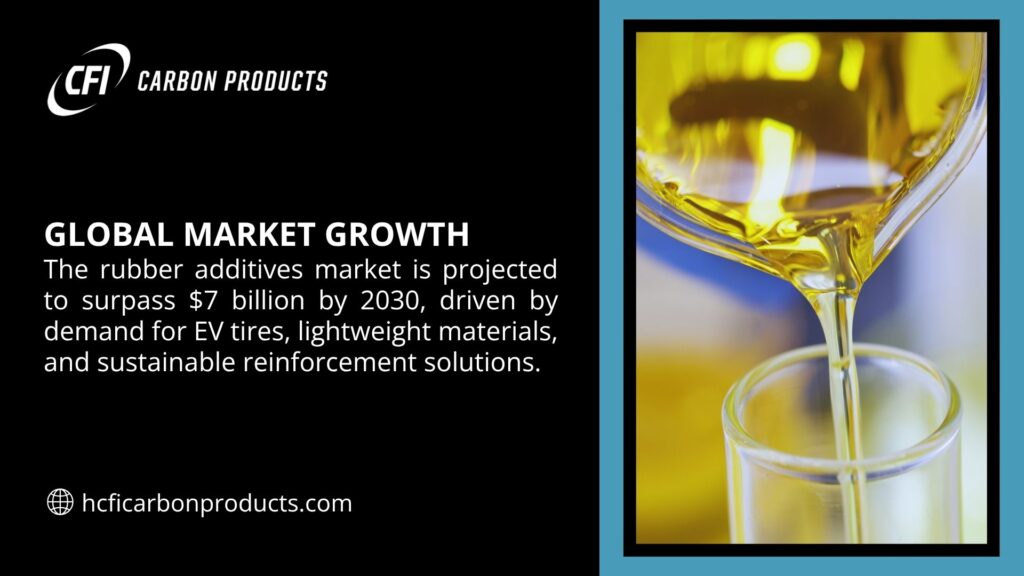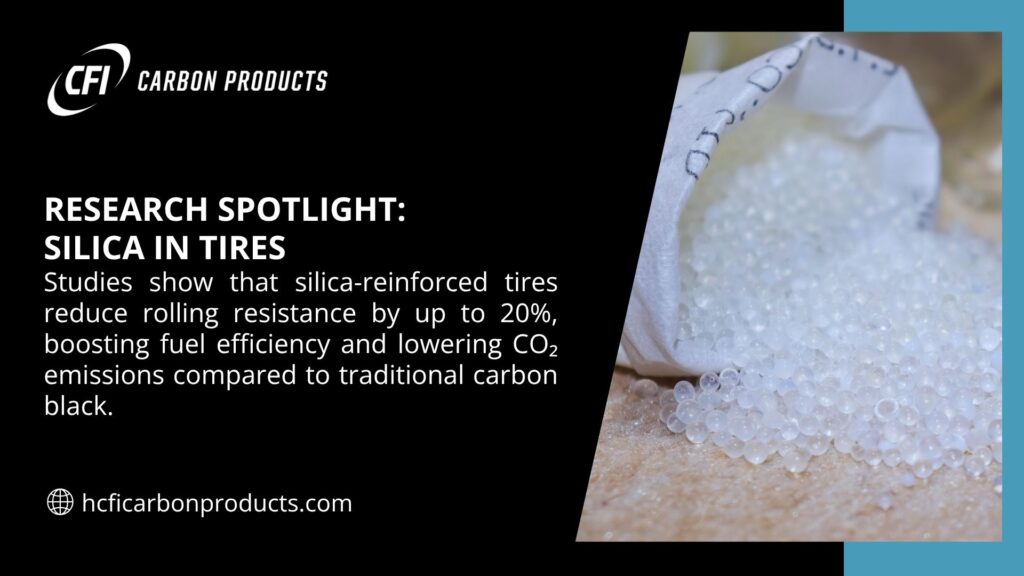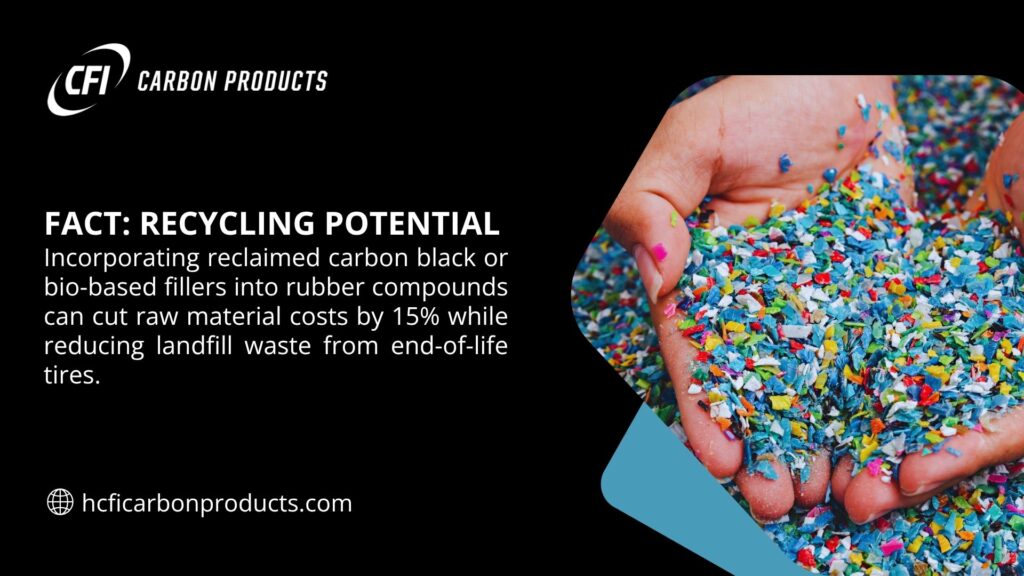Introduction
Rubber has been an essential material for industries ranging from automotive to construction for decades. Yet, raw rubber alone lacks the strength, durability, and performance needed for demanding applications like tires, conveyor belts, seals, or gaskets. This is where rubber reinforcement additives play a crucial role.
By blending additives into rubber compounds, manufacturers can drastically improve tensile strength, abrasion resistance, and overall longevity of rubber products. Today, with sustainability and cost efficiency being top priorities, choosing the right reinforcement additive is more important than ever.
In this guide, we’ll break down what rubber reinforcement additives are, why they matter, their key types, and how products like Austin Black 325 are reshaping the future of rubber manufacturing.
What Are Rubber Reinforcement Additives?
Rubber reinforcement additives are materials blended into natural or synthetic rubber compounds to enhance performance. They:
- Improve strength and wear resistance.
- Control hardness and elasticity.
- Lower density, reducing product weight.
- Contribute to cost savings by replacing more expensive polymers or fillers.
Essentially, they transform rubber from a soft, less durable material into one capable of withstanding extreme conditions in real-world use.
Why Reinforcement Matters in Rubber Manufacturing
Without reinforcement, rubber products would:
- Wear out quickly under stress.
- Fail under heavy loads.
- Struggle to maintain shape and elasticity.
In industries like automotive, where safety is non-negotiable, reinforced rubber ensures reliability in everything from tires to seals. Similarly, in construction and industrial machinery, reinforced rubber withstands heat, pressure, and constant friction.
By carefully selecting the right additives, manufacturers can balance performance, sustainability, and cost-effectiveness.
Key Benefits of Rubber Reinforcement Additives
| Benefit | Explanation |
| Durability | Increases resistance to wear, tear, and abrasion. |
| Strength | Improves tensile and flexural strength. |
| Processability | Enhances mixing and molding performance. |
| Lightweighting | Reduces density, making components lighter. |
| Cost Efficiency | Allows partial replacement of expensive raw polymers. |
| Sustainability | Supports reduced emissions and better resource efficiency. |

Common Types of Rubber Reinforcement Additives
1. Carbon Black
- One of the most widely used reinforcement agents.
- Provides excellent strength and wear resistance.
- Often used in tires and conveyor belts.
- Downsides: high density, energy-intensive production, and environmental concerns.
2. Silica
- Alternative to carbon black in certain formulations.
- Improves rolling resistance and wet traction in tires.
- Used where a lighter color or translucency is required.
- Challenges: higher cost and complex processing.
3. Clay and Talc
- Non-reinforcing fillers that reduce costs.
- Offer limited reinforcement compared to carbon black or silica.
- Typically used in less demanding applications.
4. Specialty Additives like Austin Black 325
- Unique low-density filler derived from bituminous coal.
- Reinforces with added benefits such as:
- Reduced weight.
- Improved processability.
- Cost savings compared to heavier fillers.
- Widely used in rubber, plastics, coatings, and silicone applications.
Also Read: Austin Black 325 product page.
The Role of Austin Black 325 in Rubber Reinforcement
At CFI Carbon Products, our flagship filler, Austin Black 325, is a proven solution for rubber reinforcement. Unlike traditional carbon black, it offers a unique balance of performance, lightweighting, and cost reduction.
Advantages in Rubber Applications
- Lightweight Formulation: Its low density makes rubber compounds lighter—critical in automotive applications.
- Cost Savings: Replaces heavier or more expensive fillers while maintaining performance.
- Process Improvements: Enhances flow and dispersion, making rubber easier to mold.
- Durability: Contributes to abrasion resistance and longer product life.
- Sustainability: Helps manufacturers meet environmental goals by lowering emissions linked to heavier materials.
Where It Works Best
- Tires and automotive components.
- Industrial hoses, seals, and gaskets.
- Conveyor belts and roofing materials.
- General molded rubber parts.
Comparing Reinforcement Additives
| Additive | Strength Improvement | Density | Cost | Sustainability |
| Carbon Black | High | High | Moderate | Energy-intensive |
| Silica | Medium-High | Medium | High | Better rolling resistance |
| Clay/Talc | Low | High | Low | Limited impact |
| Austin Black 325 | Medium | Low | Cost-effective | Supports sustainability goals |

Trends in Rubber Reinforcement Additives for 2025
The rubber industry is evolving. Here are the latest trends shaping the future:
- Sustainability Focus
Manufacturers are under pressure to reduce carbon footprints. Lightweight fillers like Austin Black 325 offer practical ways to meet these goals. - Cost Management
Rising raw material costs push companies to find efficient additives that lower expenses without sacrificing performance. - Global Supply Chain Reliability
With disruptions in supply chains, businesses are turning to partners like CFI Carbon Products, which works with distributors in over 30 countries. - Innovation in Tire Manufacturing
Additives that reduce rolling resistance and improve energy efficiency are in demand, aligning with the shift toward electric vehicles.
Case Example: Using Austin Black 325 in Rubber Compounds
A tire manufacturer sought to reduce production costs while maintaining durability. By substituting a portion of their traditional carbon black with Austin Black 325, they achieved:
- 10–15% weight reduction in compounds.
- Lower raw material costs.
- Improved processability during mixing.
- Extended product lifespan in real-world testing.
This demonstrates how rubber reinforcement additives, when chosen wisely, deliver measurable business value.
Challenges in Choosing Rubber Reinforcement Additives
While additives provide clear benefits, manufacturers face challenges such as:
- Balancing performance with cost.
- Ensuring compatibility with different polymers.
- Meeting evolving environmental regulations.
- Maintaining a reliable supply.
Working with trusted partners who provide both technical expertise and global distribution, like CFI Carbon Products helps overcome these challenges.

Pro Tips for Selecting Rubber Reinforcement Additives
- Start with Performance Goals: Define whether you need higher strength, better processability, or lightweighting.
- Evaluate Sustainability Metrics: Choose additives that align with your company’s environmental commitments.
- Balance Cost and Performance: Don’t focus only on raw cost—consider lifecycle savings.
- Test Compatibility: Always test in small batches before scaling.
- Partner with Experts: Work with suppliers who provide both products and formulation support.
Conclusion
Rubber reinforcement additives are the backbone of modern rubber manufacturing. From ensuring safety in automotive tires to improving the durability of industrial seals, these additives shape how rubber performs in demanding environments.
With solutions like Austin Black 325, manufacturers can now achieve all three: performance, sustainability, and profitability, without having to choose between them.If you’re looking to enhance your rubber formulations, check our Austin Black 325 page or contact us today to connect with our experts.

